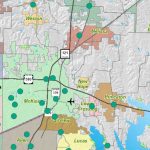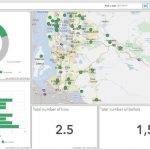Today, the news, social media feeds, and chats with friends remain tightly focused on the COVID-19 Pandemic. Much of the discussion is focused on reporting of the number of cases, testing centers, and the constant reminders to practice social distancing. Rightfully so.
It seemed like only yesterday the major focus on these very same information feeds revolved around the upcoming 2020 national election. The constant flow of banter, information, and debate had left us all wishing there was something else that could disrupt the news. All would agree the news surrounding the Coronavirus was not the replacement we were looking for as a disruption.
The National Election Must Go On
There’s never been a postponement of a national election. Our democratic process has been upheld during world wars and civil wars. The question at hand is, how do we ensure our democratic process stays intact knowing the pandemic has shifted our hourly, daily, and weekly routines. Can we adjust the voting process, taking into consideration the notion that we may still be confined to our homes in the coming months? More importantly how do we prepare to pull off elections?
Already some states have postponed primaries. There are cities and counties that have come up with quick adjustments to their elections processes. Some have instituted drive-thru polling locations, created centralized polling locations away from at-risk populations, or provided for ballot drop-off centers.
Adapting the Elections Process in Crisis Mode
Still, nobody knows what November will bring. The vote must go on. There is much discussion as to whether a complete vote-by-mail process can be executed in time. There are those elections officials that recognize people are people, and human procrastination does not necessarily equate to masses of individuals performing early voting or voting by mail when given the option. The long lines in the California primaries proved most voters, given these options, still chose to go to their polling location on Election Day.
Should states, counties, and local governments opt to include voting at a physical location, social distancing will unquestionably come into play. The protection of poll workers and elections officials as essential workers requires the same safety precautions used when purchasing food or prescriptions be put in place.
Modifications to site selection methods can be used to identify the best locations for drive thru polling places. This is likely the same process used to optimize drive thru COVID-19 testing centers or the distribution of food.
Pioneers Pave the Way
Forward-thinking elections officials in Yolo County, CA; Collin County, TX and King County, WA saw geographic information systems (GIS) as a means of modernizing their process and improving communication with the public in previous elections. They used GIS to provide a much-needed overhaul to their processes.
GIS and the applications they used can be adapted to support social distancing in the remaining primaries, caucuses, and national elections. Let me provide a couple of thoughts on how these applications can be shifted within the time remaining.
Esri, the most commonly used mapping and analytics platform in state and local government, has developed elections solutions to assist in streamlining workflows. We are seeing GIS put to great use in the wake of the pandemic. For example, the elections community has already placed an emphasis on adjusting polling locations, keeping at-risk populations top of mind. They recognize that hosting polling stations in senior centers is no longer optimal, and many of the recreation facilities are now makeshift homeless refuges.
Election Tools that Drive Results
Using GIS, elections officials can look at proposed polling locations and quickly analyze the impact on vulnerable populations. Proposing alternative locations that consider transportation access and travel times can weighed. Jurisdictions may opt for more consolidated locations. Again, GIS can assist in optimizing those locations.
Esri has develop a series of free elections applications that can be modified to help you adapt quickly should the need to improve social distancing and optimize Election Day operations. Some of the apps available through the ArcGIS for State and Local Government Elections Solutions include the following:
- Polling Place Locator
- Locate Voting Centers
- Early Voting
- Report Wait times
- Request Elections Assistance
- Monitor Election Performance
- Collect Voter Satisfaction
- Share Elections Results
With these tools, elections officials can continue moving forward with primaries and caucuses with the confidence that they are improving social distancing requirements, protecting at-risk populations, and improving communication and outreach engagements with the public.
A lesson learned from the COVID-19 response has demonstrated the ability for state and local governments to deploy GIS applications quickly. Preparing now for potential adjustments in the elections processes is mandated.
To learn more about adapting the election process in the wake of the COVID-19 crisis, download the industry perspective.
Authors note: Should the COVID-19 pandemic come to a close by November, know that the same applications will continue to help modernize your elections.




